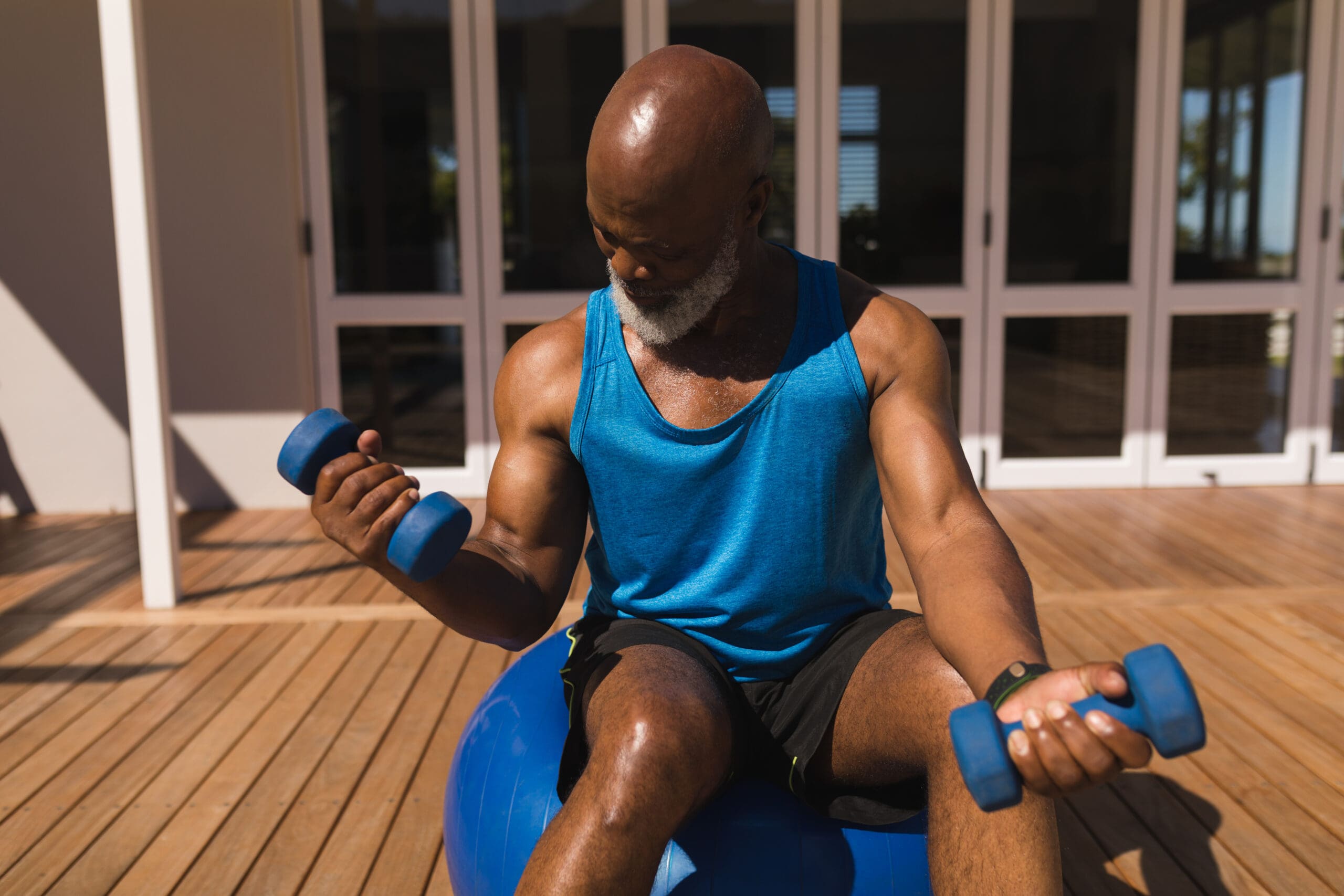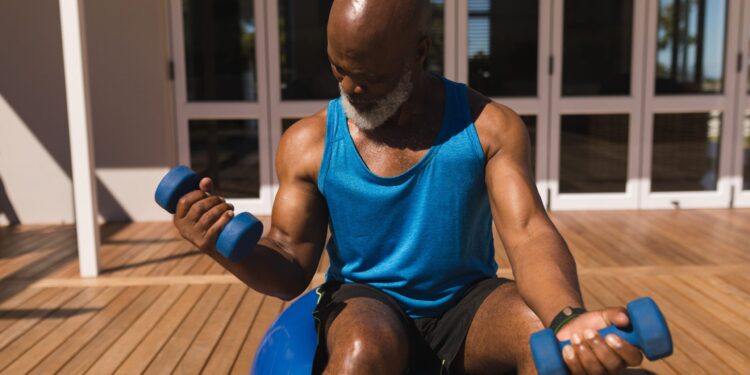
If you’re a Black man, you’ve probably heard about prostate cancer. It might’ve touched someone you love. Maybe your doctor mentioned it at 40. Or you’re living with the diagnosis, trying to make sense of what comes next.
Here’s what you might not hear enough: what you do after a diagnosis matters. And movement, the kind you do every day, can help you live longer.
Table of Contents
What the Science Says
According to a 2025 report from the American Cancer Society (ACS), prostate cancer is now the most diagnosed cancer among men in the U.S. More than 313,000 cases are expected this year. And while early-stage cases often have high survival rates, advanced-stage diagnoses are rising, especially among Black men.
Research shows that movement can make a real difference. A 2021 study published in JAMA Oncology found that men with prostate cancer who engaged in high-intensity interval training (HIIT) during active surveillance saw improvements in cardiorespiratory fitness and in markers linked to slower disease progression.
At Memorial Sloan Kettering, researchers studied whether exercise could affect prostate cancer directly. This study examined how men perceived their condition and how their tumors behaved.
Men scheduled for surgery walked on treadmills at home for about four weeks. Those who exercised at least 225 minutes a week showed changes in two key biomarkers:
- Ki-67, which tracks how fast cancer cells are dividing.
- PSA, which signals prostate cancer activity and risk.
Lower levels of both suggest slower tumor growth. Most participants were inactive before the trial, and more than a third identified as nonwhite. The exercise was safe, consistent, and done entirely at home.
While the trial didn’t measure survival, it showed that movement can influence the biology of the disease.
What Black Men Are Up Against
Prostate cancer affects Black men more severely because of delayed diagnoses, limited access, and medical systems that don’t always respond with urgency or equity.
In our community, people aren’t always told what to watch for. Screenings come late. Treatment isn’t always aggressive, and research often leaves us out. Movement won’t fix everything, but it helps. It supports sleep, stress, strength, and survival. It’s something we can do while the rest catch up.
Move With Purpose
You don’t need to run miles or lift heavy. The CDC recommends:
- 150 minutes of moderate activity per week, like walking, dancing, or yard work.
- 75 minutes of vigorous activity like jogging or cycling.
- Two days of strength training for major muscle groups.
For people with prostate cancer, these guidelines still apply. They should be adjusted based on energy levels, treatment stage, and safety. Movement doesn’t have to be intense. It can be light, structured, or flexible. Even seated stretches, short walks, or using household items for resistance count.
If treatment side effects are slowing you down, start where you are. Stretch in the morning. Walk at lunch. Dance with your kids. What matters is consistency and paying attention to what your body can handle.
Talk to your doctor or a physical therapist about what’s safe for you. Ask about programs that understand your needs. Some hospitals offer exercise oncology support, and many community centers now host classes designed for survivors.
Your Strongest Resource
The journey won’t look the same for everyone. Some find peace in morning jogs. Others prefer walking, stretching, or lifting light weights. Exercise helps, but it’s not just about routines. It’s about intention. About finding what motivates you, what feels good, and what fits into your life.
If you’re wondering what to carry with you, bring purpose, trust in your body, and the instinct to keep moving when things feel uncertain.
That’s where the progress can begin.
Resources:
Key Statistics for Prostate Cancer | Prostate Cancer Facts | American Cancer Society
Adult Activity: An Overview | Physical Activity Basics | CDC

























